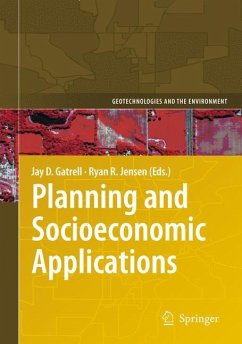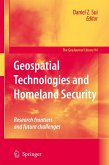The book focuses on socio-demographics and the use of these data to support strategic planning initiatives associated with the spatial expansion of urban areas and economic development. It contains a conceptual discussion of the challenges, both methodological and practical, implementing GIS applications for assessing economic and planning activities in peripheral regions including developing countries.
The book examines how spatial clustering concepts, spatial models, and related visualization techniques (GIS) can be applied to the case of economic development in rural environments. It discusses methodological issues including data and analysis issues. It also examines the differential growth patterns of counties within city-systems of the Western United States from the date of county formation until the late 20th century, using an historical GIS and historical US Census data. The final chapter summarizes the collection and positions it within the context of the broader book series on geotechnologies.
The book is written by planning practitioners as well as university based researchers. It will provide scholars and professionals with a survey of the contemporary work in the field, and with insights into remaining questions, methodological debates, and technical complications of employing geotechnologies in the real world.
This chapter has shown a small sample of GIS applications in economic devel- ment. GIS is a powerful tool for data analysis and presentation, and the economic development rami cations are truly signi cant. The speed at which data and stra- gies can be coordinated is clearly changing the way economic developers approach their job. There are a number of important trends that are likely to result in GIS becoming more pervasive in the economic development community. These include declining costs of GIS software, increased computing power, and the growth of Web-based GIS applications. There also has been increase in GIS skills among economic development professionals. References Bastian, L. (2002). Getting the best from the web. Area Development Site and Facility Planning, March 1-7. Accessed 5 September 2008. Batheldt, H. (2005). Geographies of production: growth regimes in spatial perspective (II) - kno- edge creation and growth in clusters. Progress in Human Geography, 29(2), 204-216. Bathelt,H.,Malmberg,A.,Maskell,P.(2004). Clustersandknowledge: localbuzz,globalpipelines and the process of knowledge creation. Progress in Human Geography, 28(1), 31-56. Bernthal, M., Regan, T. (2004). The economic impact of a NASCAR racetrack on a rural com- nity and region. Sports Marketing Quarterly, 13(1), 26-34. Blackwell, M., Cobb, S. Weinbert, D. (2002). The economic impact of educational institutions: Issues and methodology. Economic Development Quarterly, 16(1), 88-95. Blair, J. (1995). Local Economic Development, Analysis and Practice. Thousand Oaks, CA: Sage Publications.
The book examines how spatial clustering concepts, spatial models, and related visualization techniques (GIS) can be applied to the case of economic development in rural environments. It discusses methodological issues including data and analysis issues. It also examines the differential growth patterns of counties within city-systems of the Western United States from the date of county formation until the late 20th century, using an historical GIS and historical US Census data. The final chapter summarizes the collection and positions it within the context of the broader book series on geotechnologies.
The book is written by planning practitioners as well as university based researchers. It will provide scholars and professionals with a survey of the contemporary work in the field, and with insights into remaining questions, methodological debates, and technical complications of employing geotechnologies in the real world.
This chapter has shown a small sample of GIS applications in economic devel- ment. GIS is a powerful tool for data analysis and presentation, and the economic development rami cations are truly signi cant. The speed at which data and stra- gies can be coordinated is clearly changing the way economic developers approach their job. There are a number of important trends that are likely to result in GIS becoming more pervasive in the economic development community. These include declining costs of GIS software, increased computing power, and the growth of Web-based GIS applications. There also has been increase in GIS skills among economic development professionals. References Bastian, L. (2002). Getting the best from the web. Area Development Site and Facility Planning, March 1-7. Accessed 5 September 2008. Batheldt, H. (2005). Geographies of production: growth regimes in spatial perspective (II) - kno- edge creation and growth in clusters. Progress in Human Geography, 29(2), 204-216. Bathelt,H.,Malmberg,A.,Maskell,P.(2004). Clustersandknowledge: localbuzz,globalpipelines and the process of knowledge creation. Progress in Human Geography, 28(1), 31-56. Bernthal, M., Regan, T. (2004). The economic impact of a NASCAR racetrack on a rural com- nity and region. Sports Marketing Quarterly, 13(1), 26-34. Blackwell, M., Cobb, S. Weinbert, D. (2002). The economic impact of educational institutions: Issues and methodology. Economic Development Quarterly, 16(1), 88-95. Blair, J. (1995). Local Economic Development, Analysis and Practice. Thousand Oaks, CA: Sage Publications.








